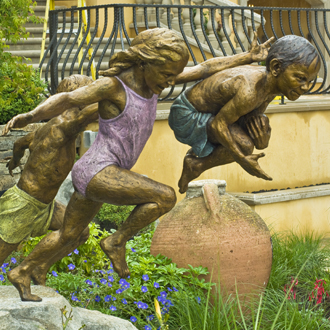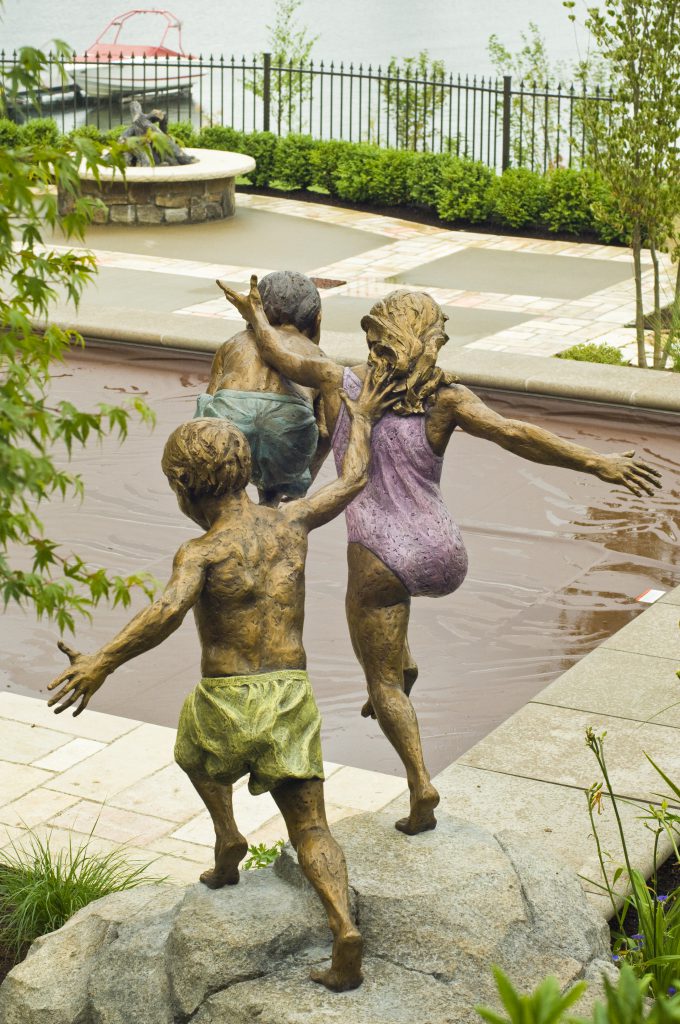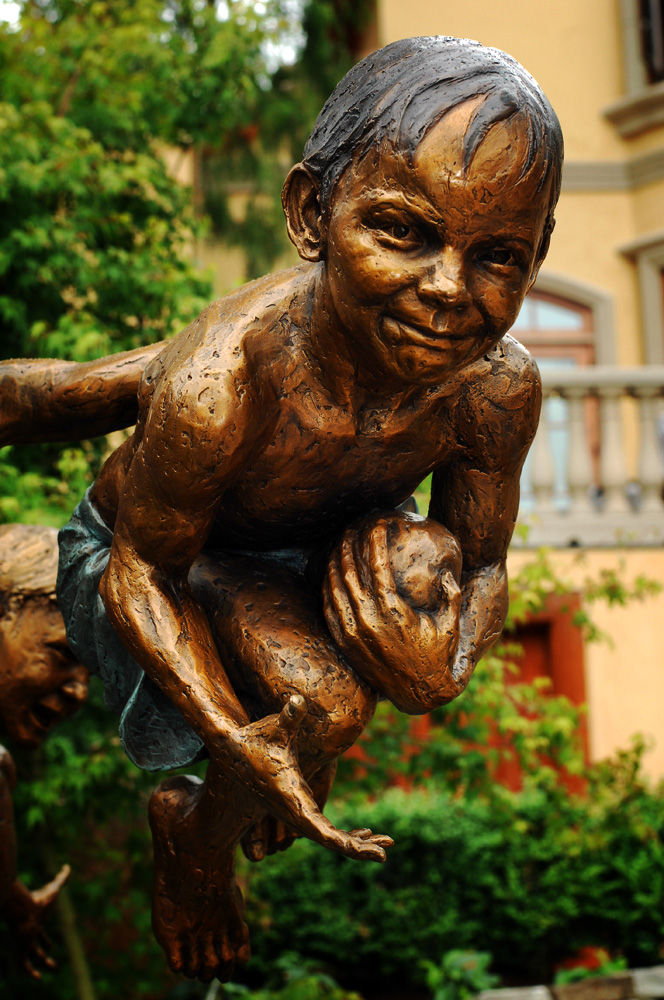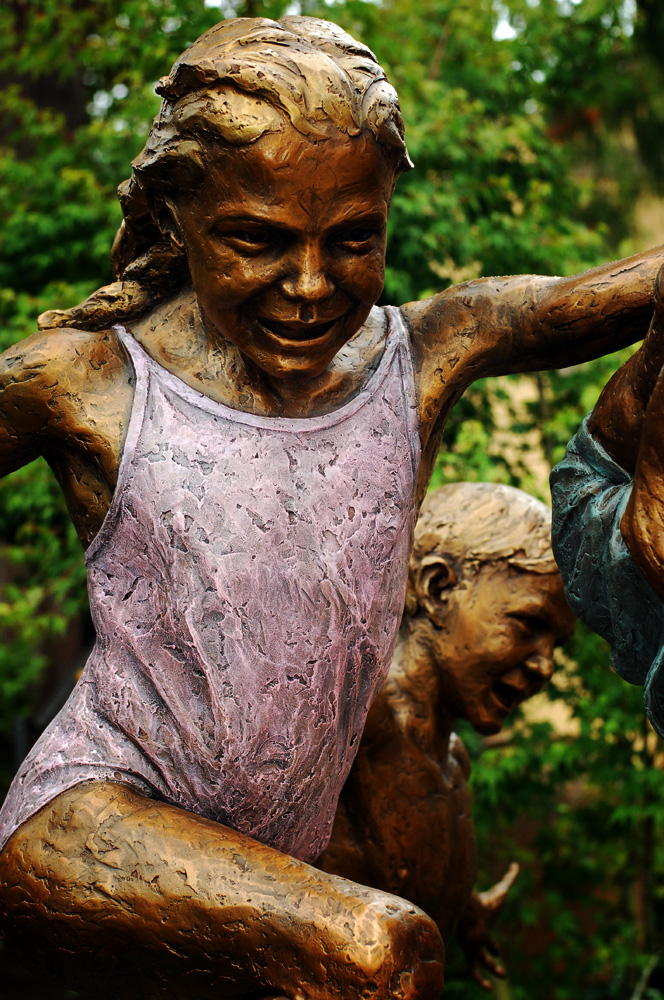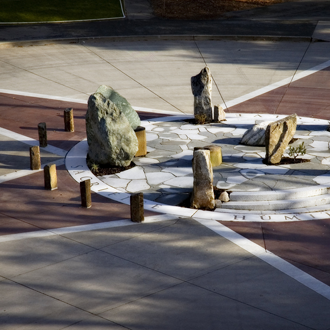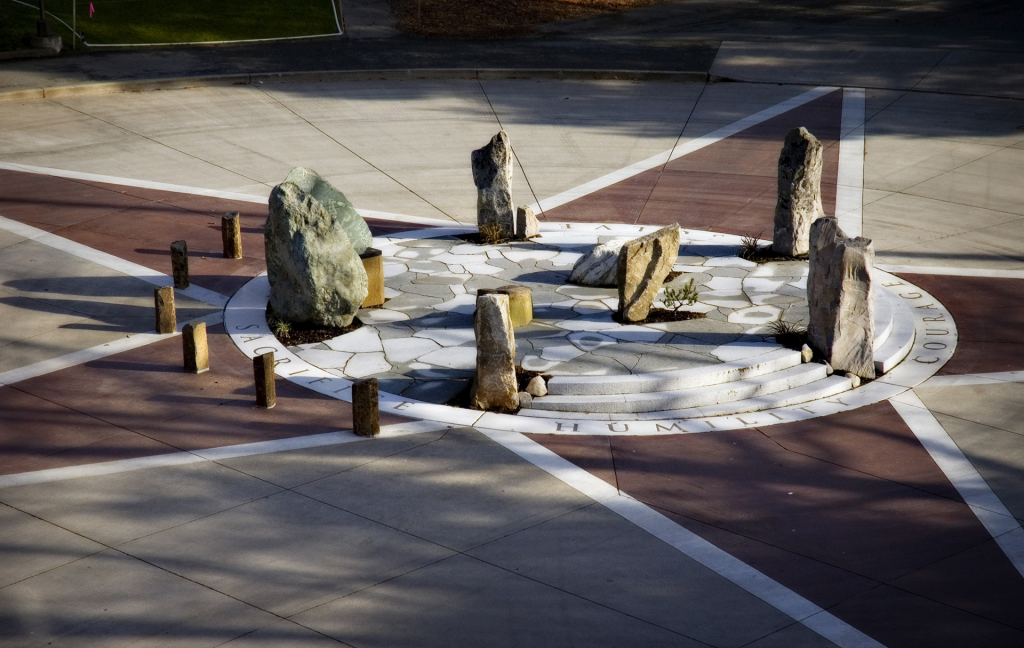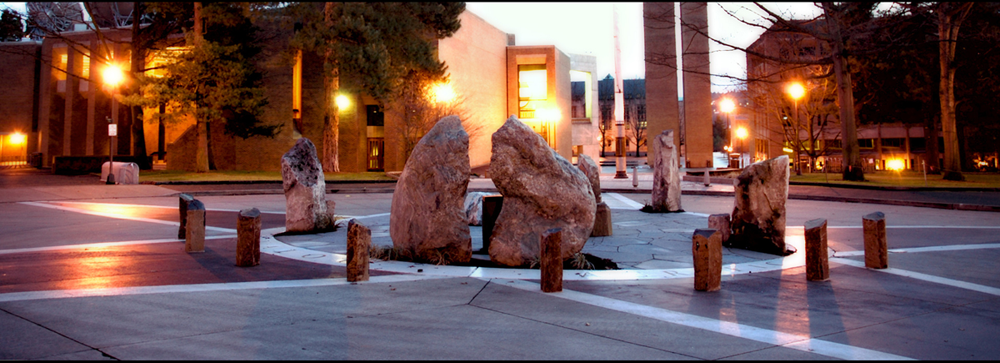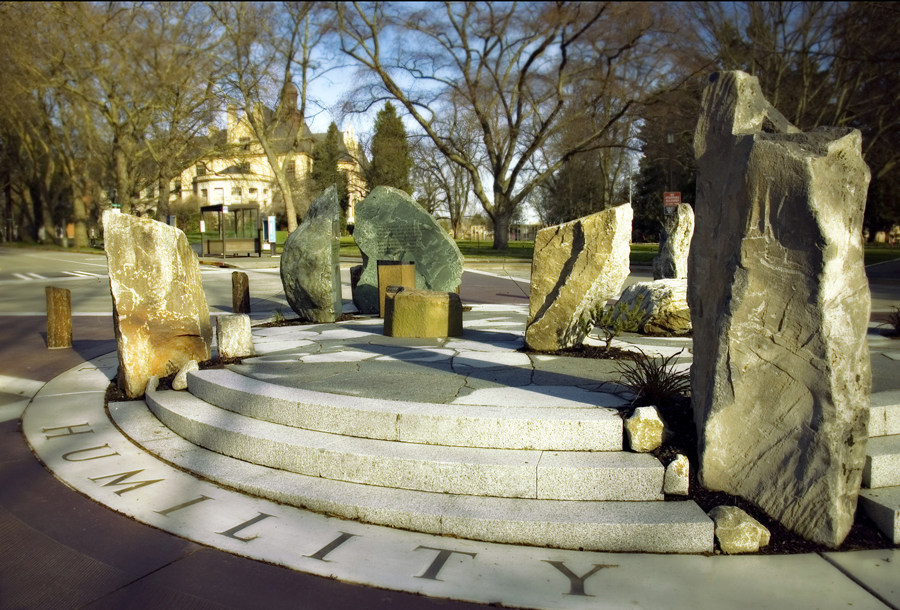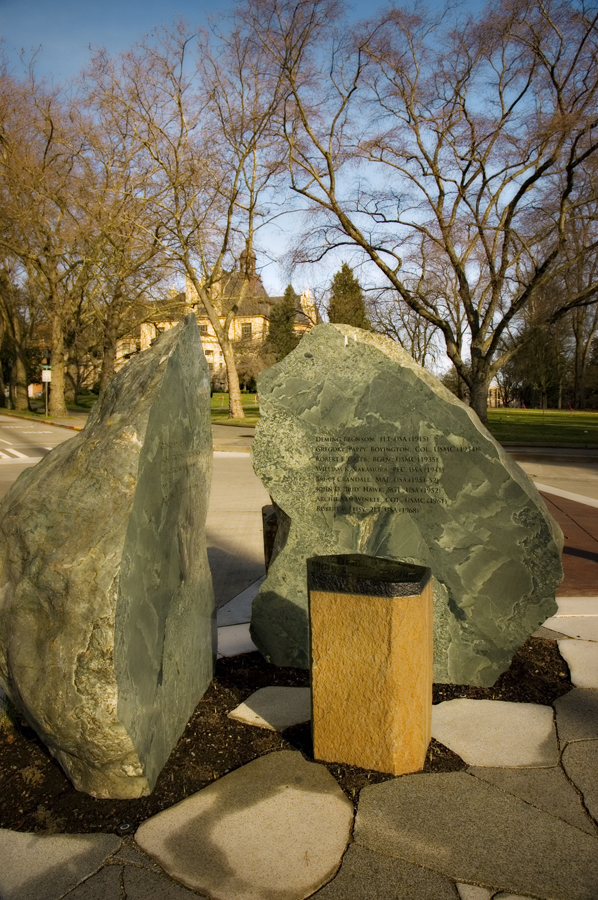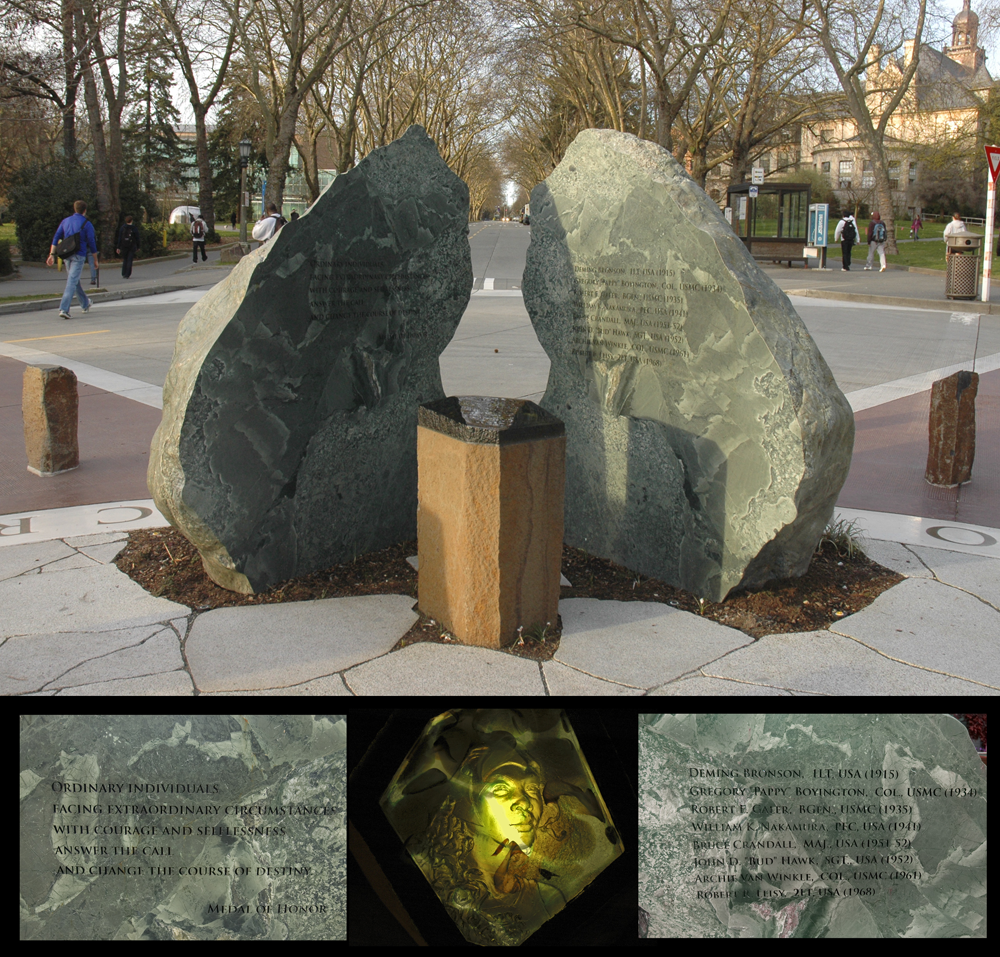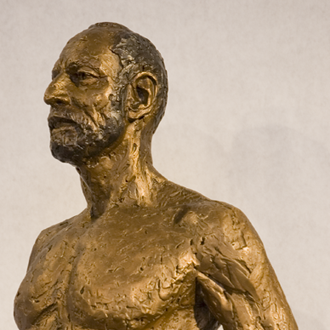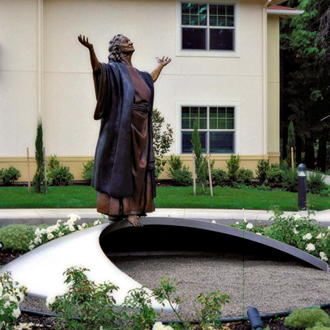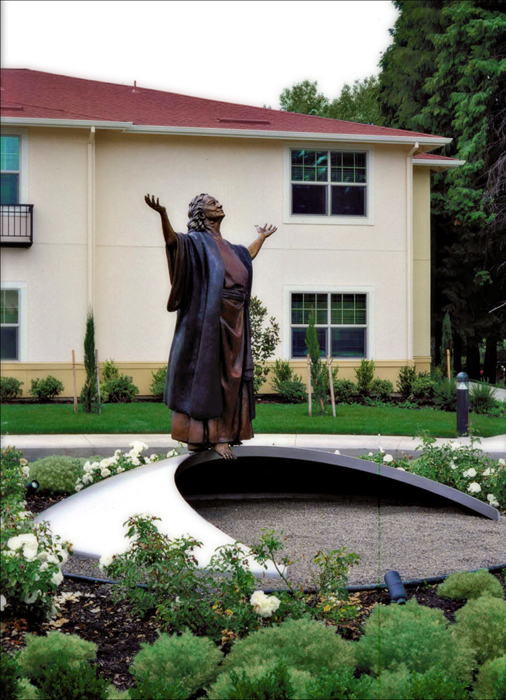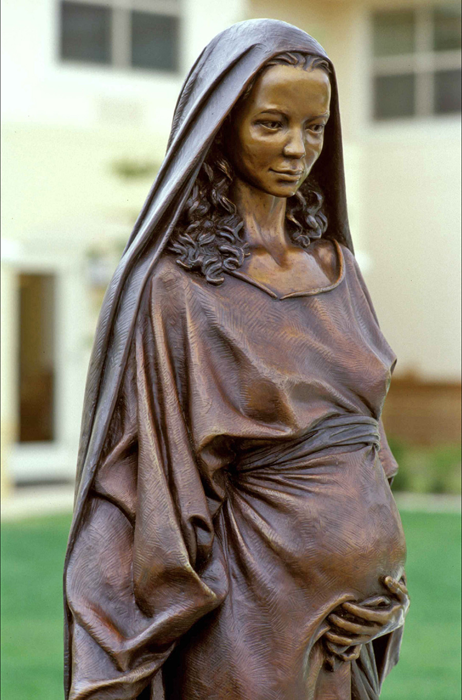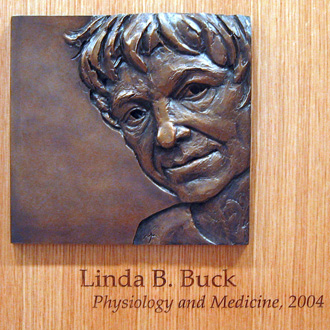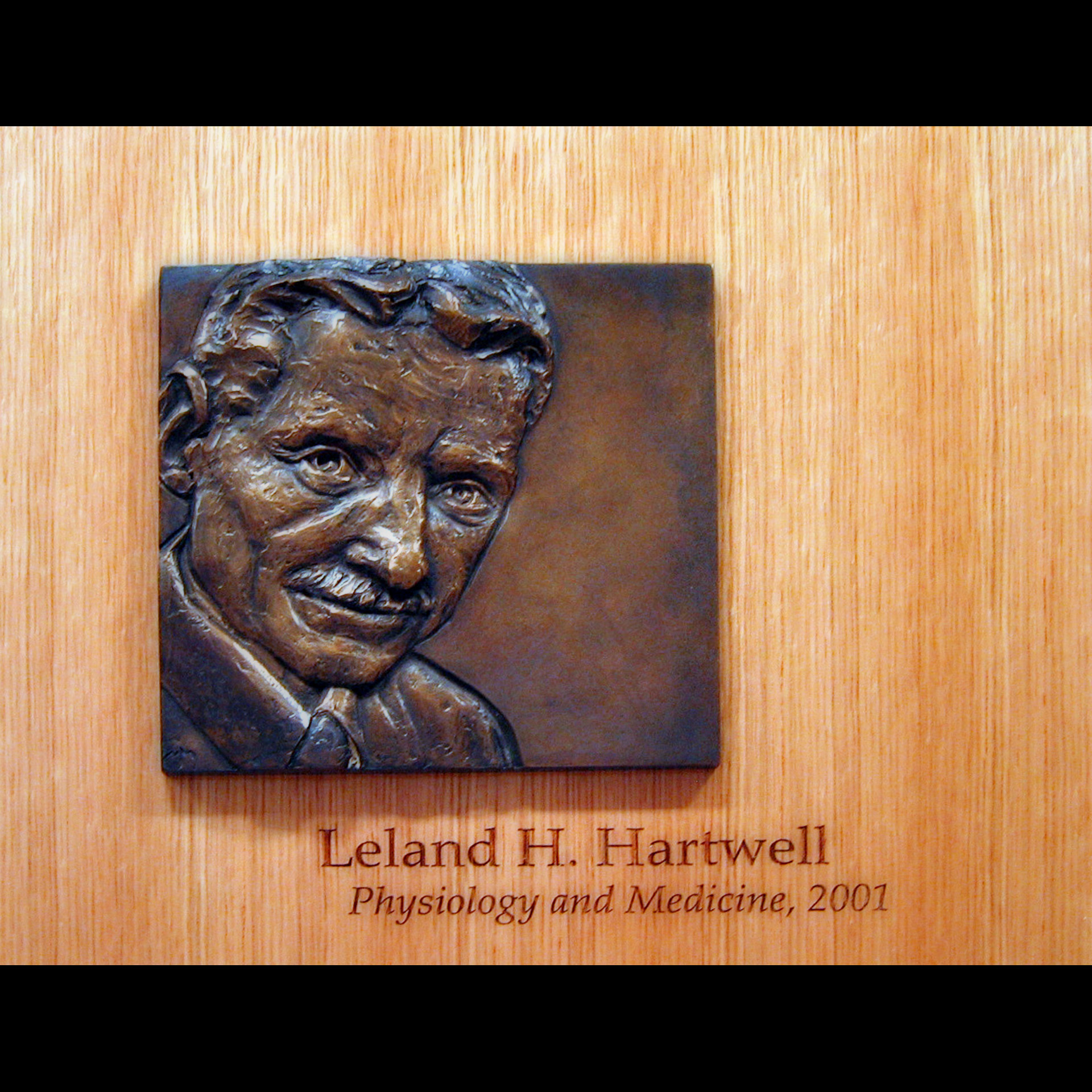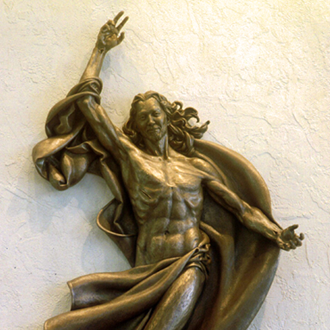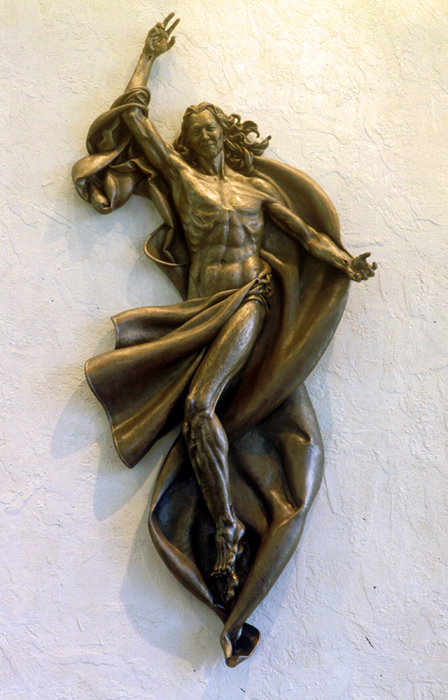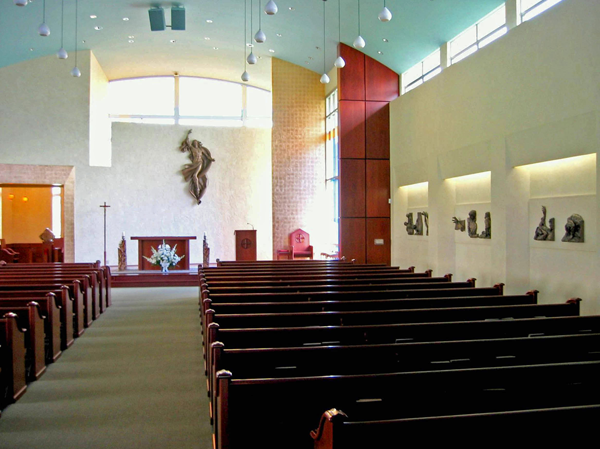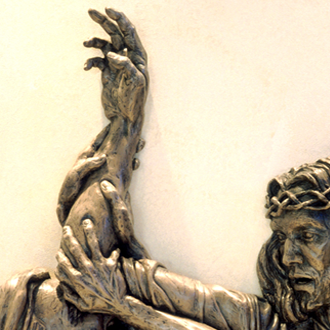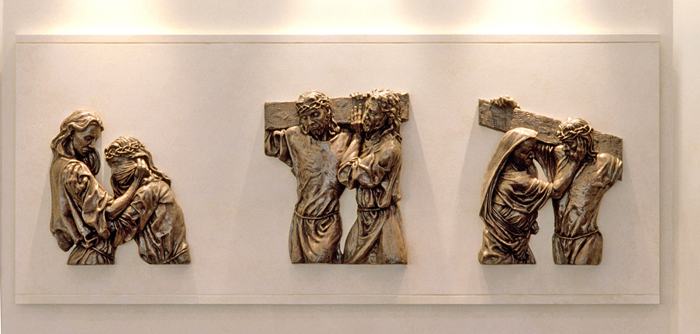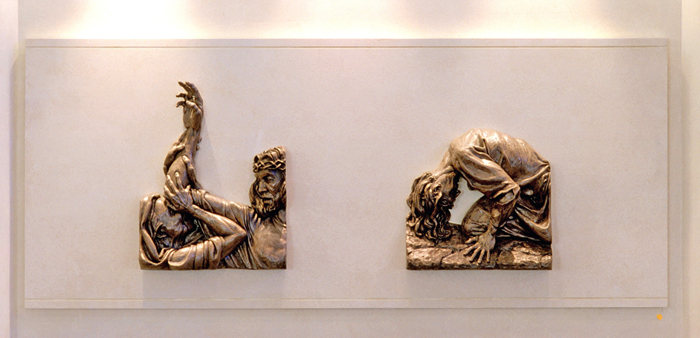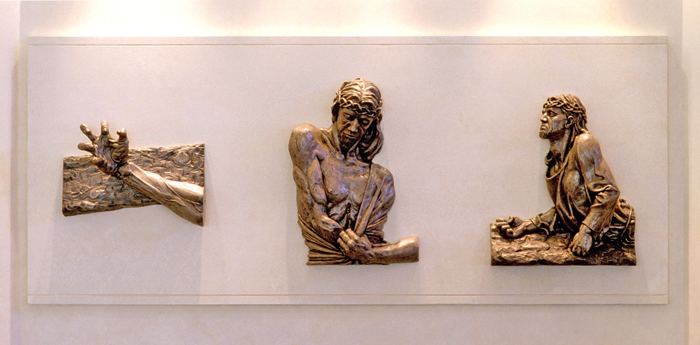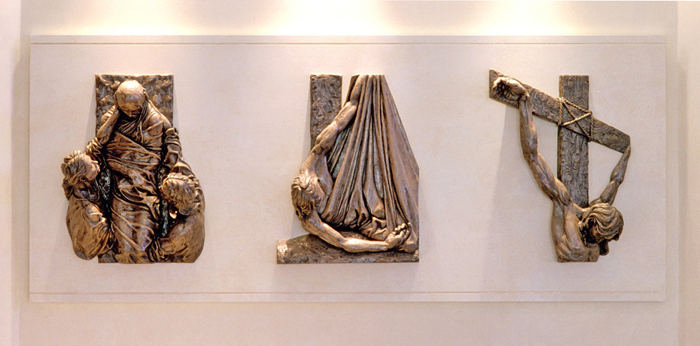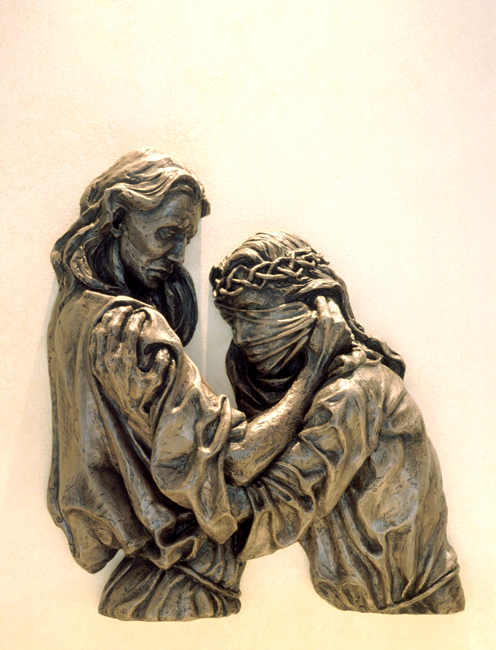Private Commission 2012
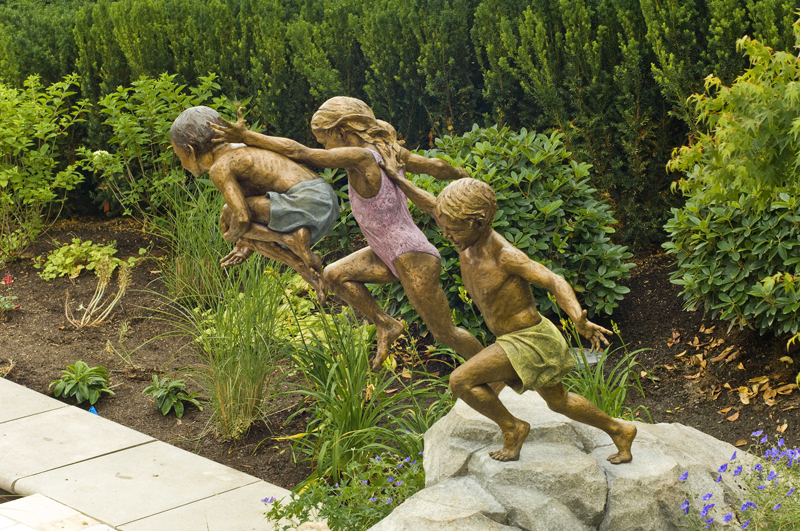
Designed as a pool-side sculpture, this life-sized piece was inspired by the customer’s grandchildren. It was an interesting and challenging piece to make, in that the entire piece is supported by 3 small points of attachment, and that the grandchildren were in fact younger in age than their likenesses at the time, involving trying to age the faces appropriately.
Category: Commissions
Medal of Honor Memorial
The memorial is designed to be the symbolic heart of a busy campus. Its position on Memorial Way is significant not only for its placement alongside the University’s memorials to students and faculty lost in WWI and WWII, but because it creates a sheltering island amidst the sometimes cacophonous and often contradictory pulls of campus life.
It is designed to allow someone to take a moment’s pause amidst the flurry to recognize and confront the tough decisions in life; and find inspiration and affirmation to do what must be done.
I am a representational artist. My work is to create objects and spaces that faithfully depict the subject at hand; to capture and convey these short pivotal moments that have changed so much; to remember and hold them up for the rest of us to regard.
This memorial captures and honors the actions performed by these men, whose actions represent the questions and challenges we all will face at some time in our lives. These moments of extreme challenge when our lives, our futures, and the very fate of our cause lay in the balance. These moments are etched in our hearts. They are the stories we hope to pass to our children and the ages in bronze, in glass, and in stone.
I hope this memorial is a sanctuary, inviting people to come in and pause and be inspired by the example of these individuals and gather the courage and resolve to be in touch with something greater than oneself.
Don’t call me Sidney
Assumption
The Assumption of the Virgin is a work designed for Assumption Village in St John’s Oregon, and was commissioned for this project by Rev Michael Maslowsky in the summer of 2001 and installed the following spring.
This piece grew out of my desire to depict a very different sort of Virgin and Assumption than that of historical tradition, a scene usually of deathbed sorrow and angels in ascension with a pious and youthful Virgin wafting heavenward in a cloud. Instead here, Mary settled into her years, her face has lined with the years of hard life in the desert. She is full of the weight of the world and the sorrow of her life, and yet wise and charged with faith. She steps forward from one world to the next, one foot on the edge of a precipice, proudly and without a hint of doubt, absolutely confident in gods grace that will keep her from falling into oblivion. To me she becomes the embodiment of absolute, rock solid faith in the face of a hard life and times that call faith into deepest question.
The symbolism of the crescent moon goes back millennia, linking Mary with the earliest stirrings of religious feeling in humanity and the first known forms of the divine feminine. It was my intent to link this moon symbol with a more modern sense of our nearest planetary partner, thus bringing the symbolism into a more contemporary form.
Our Lady of Life
This piece was three years in the making. It originated in 1999 as a third and culminating element in a cycle of work installed at St Anthony’s Catholic Church in Portland Oregon. Those pieces, a Stations of the Cross and a Resurrection, emphasized the end of Jesus’ life and his triumph in the afterlife. The Virgin, eventually to be called Our Lady of Life, was an attempt to round the cycle back to the beginning, to the conception of the savior almost as a rebirth. Rather than an Annunciation, or a Madonna and Child, however, I was drawn to the human story of the Mother of God, specifically the miracle of one life coming to be within another.
I am intensely interested in the very human condition and psychology of Mary at this time. It cannot have been an easy situation! A very young girl, perhaps thirteen, unmarried, and yet in a family way. Her guardian and husband-to-be, Joseph, protesting to the community that the child she carried was not his, had yet to hold faith with her in her unlikely story. Were he to cast her out, her future, and that of her child could only be grim. I imagine her at this time very ambivalent about this little life she had found herself charged with. I see her walking in the wilderness of doubt and fear in the early months of her pregnancy. It is impossible to see a way out. And then there is a movement. Mary stops and feels the baby in her womb reaching out to touch her from within. She lays her hand against the palpitation. She feels for perhaps the first time the full presence of this child, a miracle only a mother can know. Suddenly there is a feeling of great calm and wonderment. Everything will be all right, for her, for the child, and for all of humanity. She looks up from her own belly to catch the eye of the first person she sees, smiling outward that secret serene knowledge of faith.
This work can be seen at Assumption Village in St Johns, The Community Center in Corvallis, and the site for which it was originally designed, the grotto at St Anthony’s Village in Portland.
Michael Magrath, January 2003
UW Nobel Laureate Wall
In 2007 the University of Washington dedicated an honor wall in recognition of outstanding faculty achievement. Magrath Sculpture was commissioned to make bas relief portraits of the six faculty members who had won the Nobel Prize. As this project was on a very tight deadline, I called in Heidi Wastweet, of Wastweet Studios and we split the portraits in order complete this on time. Woodwork and general contracting by William Walker Woodworking. The project was designed by Mithun Architecture
Special thanks also to Steve Anderson and Vicking Fire Foundry for their herioc efforts in casting this project.
Resurrection
Resurrection Altarpiece
Intended as a sort of fifteenth and final Station, The Resurrection Altarpiece was dedicated at St Anthony’s Catholic Church in Portland Oregon in June of 2000.
While the Stations of the Cross were intended as a very direct and visceral interpretation of the Passion, The Resurrection, was intended as a less literal, more lyrical interpretation on the theme of rebirth, re-inspiration, or redemption. In this piece the road to death depicted in the Stations is vindicated by a consummation that implies victory over the forces of annihilation. If the Passion was a sort of gamble, faith in the face of certain annihilation, the Resurrection is an affirmation of the delight in attaining glory through that improbable path. He is just awakened, seeing before him not only his own path to reunification, but the multitudes of dispirited with whom he has lived. His expression is to say, “It’s fine. You are welcome. Come this way.” In the grandest sense it is “I see this, and I see you. It is the same.”
Formally, I see the piece being about smoke, about spirals, about the drapery veil falling off as the figure arises into the less corporeal realm. The fact that light coming off the south window would ignite the upper torso in gold while the ground light of the church would base the feet and legs in blue made the composition a natural for the transition from material to ethereal. While the square frame of the wall demanded, and a conservative need compelled a flowing drapery, I’ll confess to a metaphoric preference to an overarching shape to tie the outline together. Be it shell or womb, the entire is conceived as an organic frame for a life promoted as archetypal of integration between living and ideal form.
Michael Magrath
June 2000

